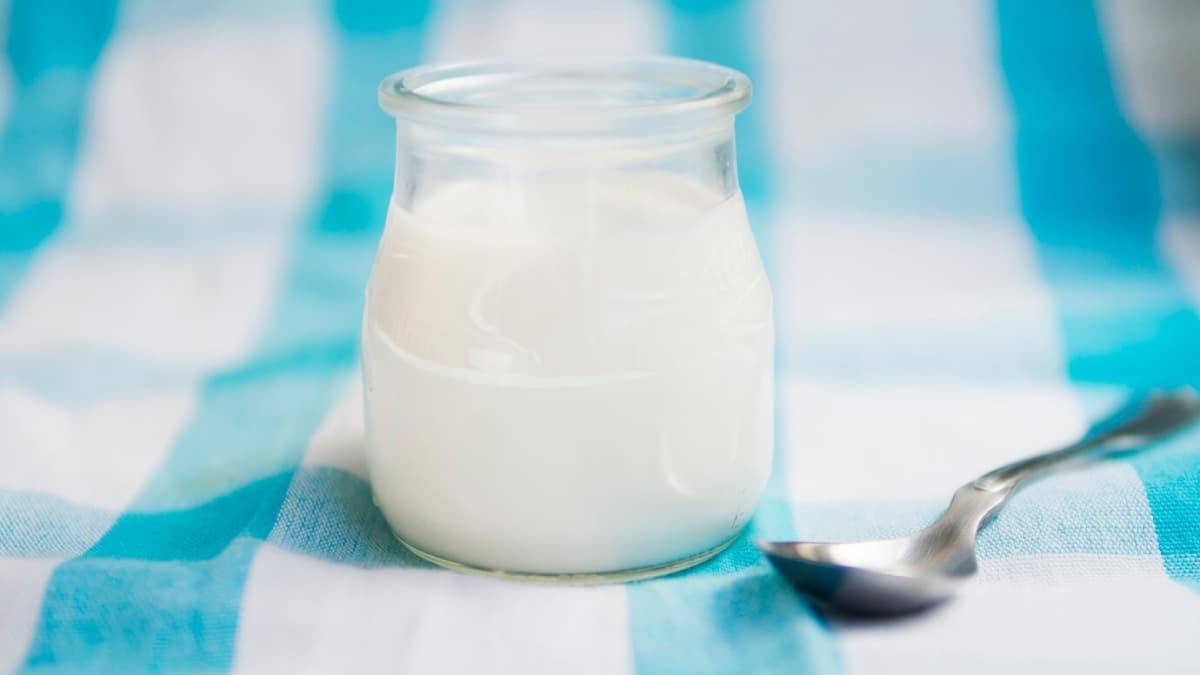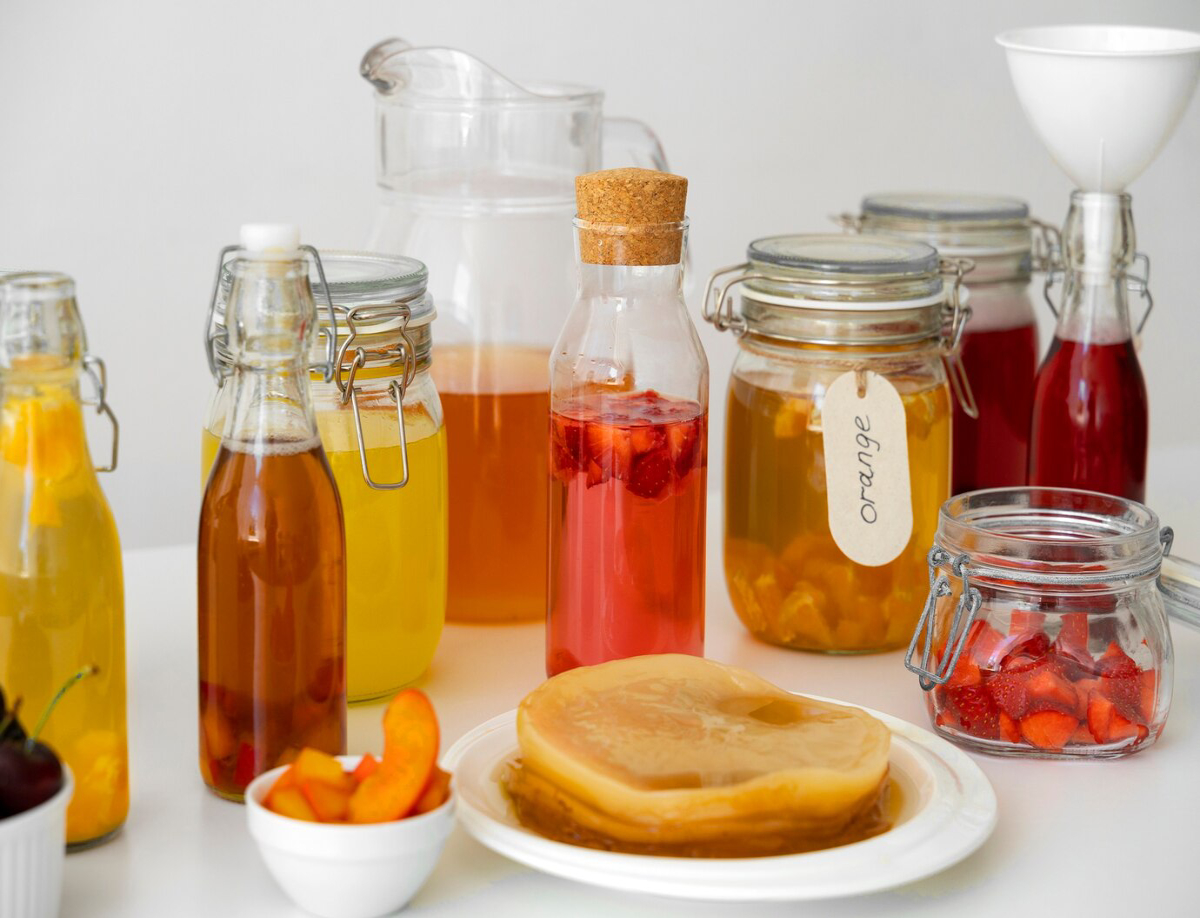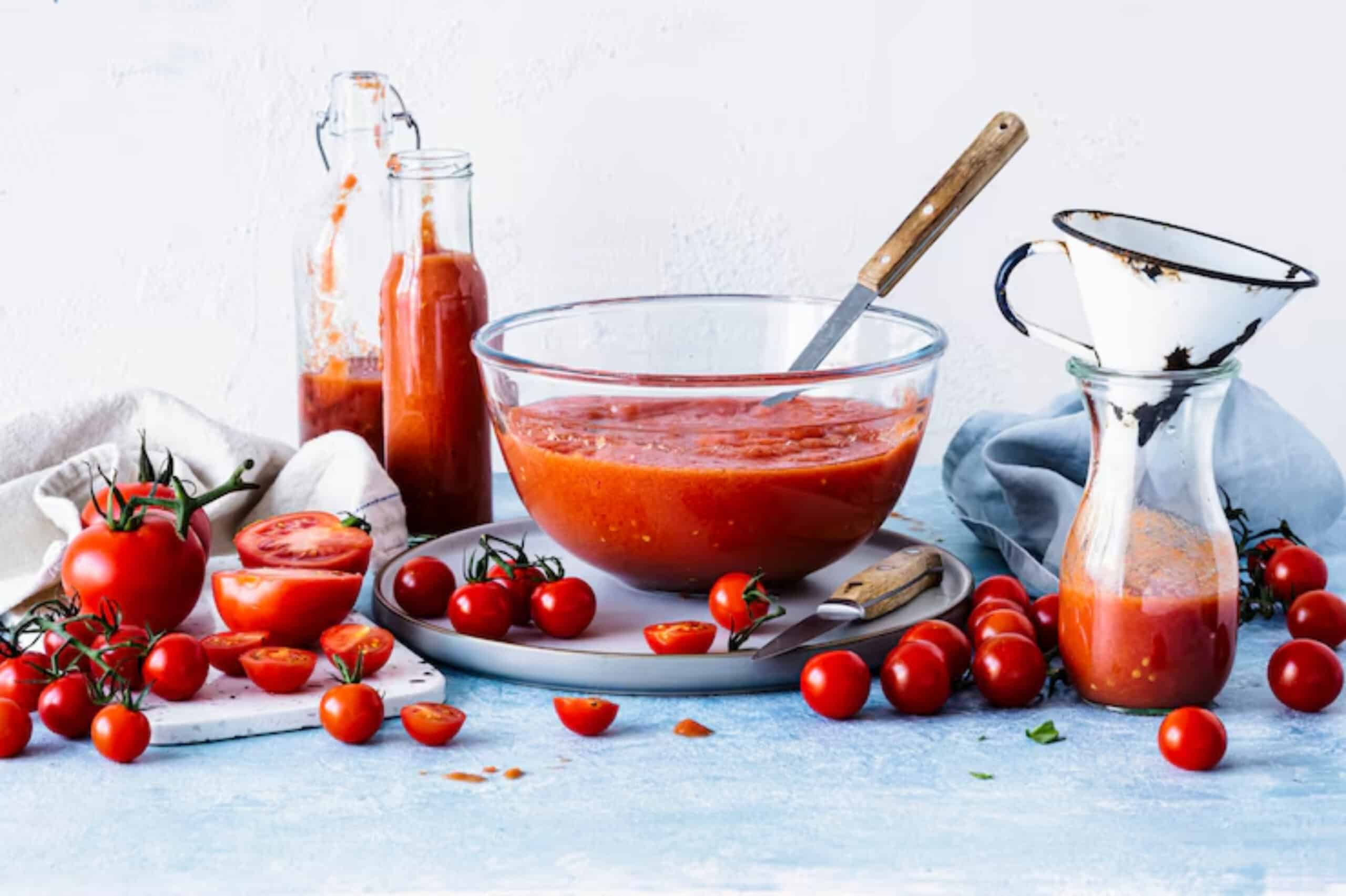
Making Fermented Ketchup for a Tangy and Probiotic Twist
We all know and love ketchup. It’s the beloved companion to chips, the secret swirl in burger sauce, and the reason our sandwiches sing. But did you know that your standard supermarket ketchup is often loaded with sugar, preservatives, and barely any nutritional benefit? Enter homemade fermented ketchup — a tangy, naturally preserved, gut-loving twist on a classic that just might become your new kitchen staple.
In this post, you’ll learn how to turn fresh, everyday ingredients into a jar of probiotic condiments that not only pack a flavour punch but also boost your digestion and immune health. From fermentation know-how to taste tips, this is your complete guide to fermenting sauces at home — no fancy equipment or experience required.
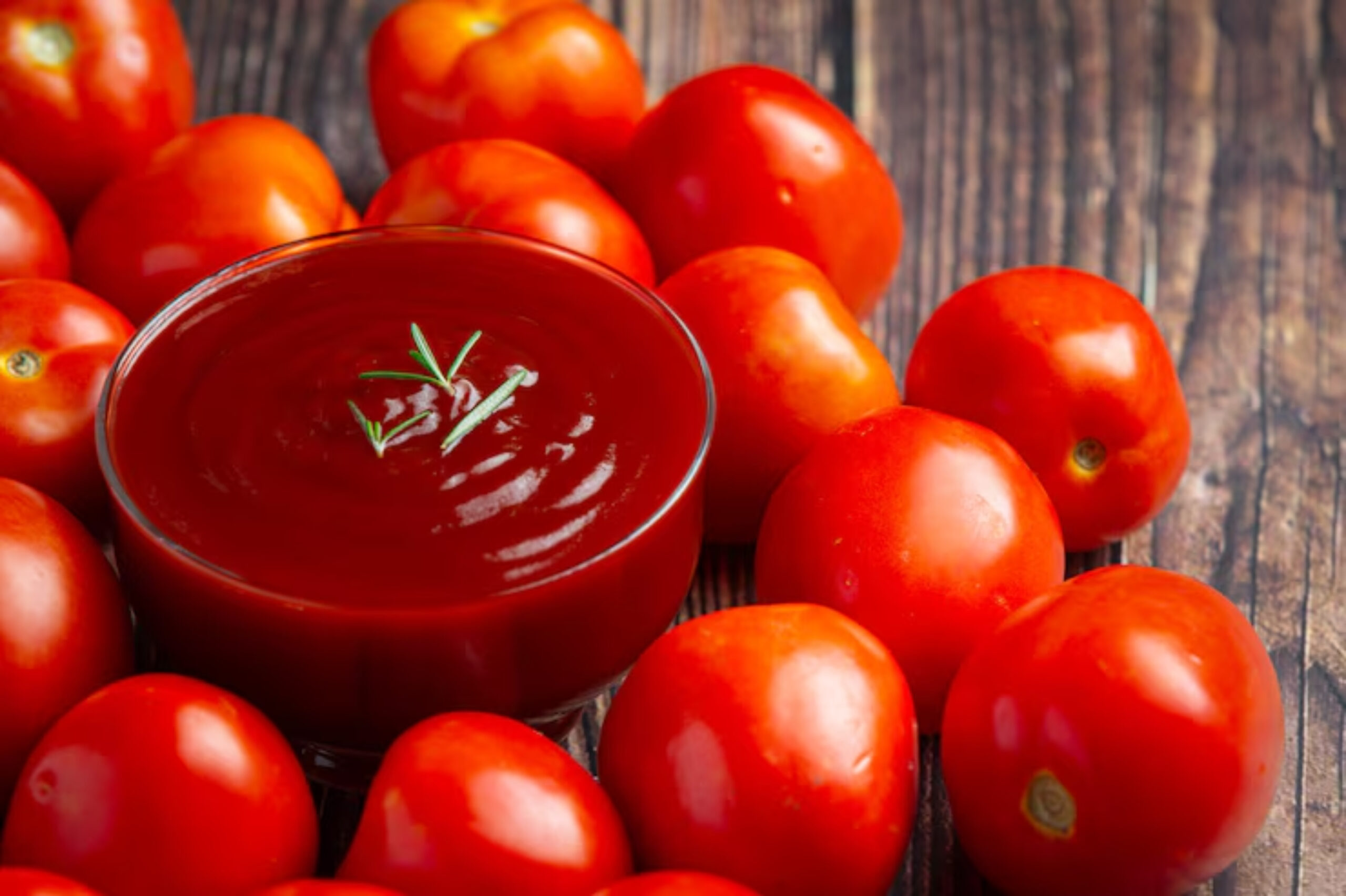
Why Ferment Ketchup?
Beyond Taste: Health in Every Spoonful
Store-bought ketchup may taste great, but it typically contains:
- Refined sugar or high-fructose corn syrup
- Artificial preservatives
- Pasteurised contents (meaning zero live cultures)
Fermented ketchup, on the other hand, is a living food made with whole, unprocessed ingredients. Through lacto-fermentation, beneficial bacteria grow and thrive, producing:
- Probiotics that support gut health
- Lactic acid that naturally preserves the ketchup
- A deeper, richer flavour with a subtle tang
Easy to Make, Easy to Love
You don’t need a degree in food science to get started. Fermenting ketchup is simple, safe, and satisfying. Plus, it can be tailored to your taste preferences — whether you love it sweet, spicy, smoky, or herbaceous.
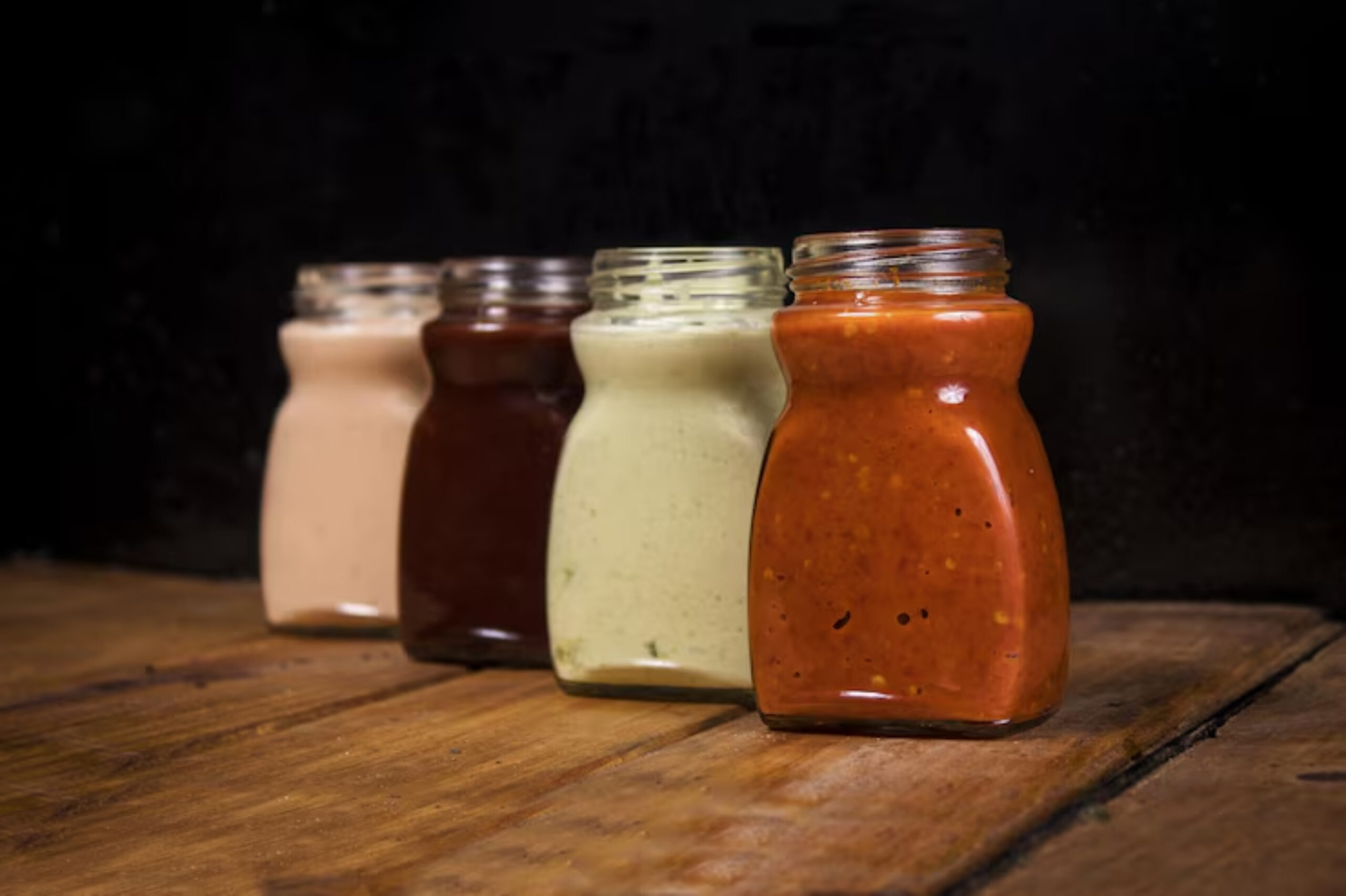
The Science Behind Fermenting Sauces
Fermentation is the metabolic process where microorganisms (primarily lactic acid bacteria) break down sugars into lactic acid. In the case of ketchup, the natural sugars from tomatoes and added sweeteners serve as food for these microbes.
As the bacteria multiply, they:
- Create a tangy flavour profile
- Increase bioavailability of nutrients
- Produce beneficial enzymes and probiotics
Curious about the bigger picture? Learn more in our article: The Science Behind Fermented Probiotics.
Ingredients & Tools You’ll Need
Base Ingredients:
- 2 cups tomato paste (organic if possible)
- 1–2 tablespoons raw apple cider vinegar
- 1 tablespoon raw honey or maple syrup (optional)
- 1 teaspoon sea salt (non-iodised)
- 1 clove garlic, finely grated
- ½ teaspoon ground allspice or clove (optional)
Fermentation Starter Options:
- 1 tablespoon whey (from yoghurt, strained kefir, etc.)
- OR 1 tablespoon sauerkraut brine (unpasteurised)
- OR simply rely on wild fermentation (no starter)
Optional Add-Ins:
- Chilli flakes or chipotle powder for heat
- Smoked paprika for depth
- Mustard powder for a tangy twist
Tools:
- 500ml sterilised glass jar with lid
- Wooden spoon or spatula
- Funnel (for neat pouring)
- Label for dating

Homemade Fermented Ketchup Recipe
Step 1: Mix Your Ingredients
In a mixing bowl, combine:
- Tomato paste
- Vinegar
- Honey or maple syrup
- Garlic, salt, spices
- Starter liquid (if using)
Stir until smooth and well-integrated.
Step 2: Fill the Jar
- Spoon the ketchup into your clean jar.
- Leave at least 1 inch of headspace at the top.
- Tap the jar gently on the counter to remove air pockets.
Step 3: Seal and Label
- Seal loosely with a lid (or use an airlock lid if you have one).
- Label with the date and ingredients.
Step 4: Let It Ferment
- Leave the jar at room temperature (18–22°C) for 3–7 days.
- Taste each day after day 3. It should develop a tangy flavour and slight effervescence.
Step 5: Refrigerate
Once you like the flavour, move it to the fridge. It will continue to ferment slowly and last up to 2 months.
Tip: Ketchup too thick? Add a splash of filtered water when mixing.
Taste Tips & Customisation Ideas
Adjust Sweetness
- Add more honey for a kid-friendly version
- Reduce sweetener for a tangy, savoury profile
Spice It Up
- Use fresh chilli, black pepper, or horseradish
- Mix with fermented mustard for a punchy sauce
Get Creative
- Blend in roasted red pepper for smokiness
- Add fermented onion for complexity
How to Use Fermented Ketchup Every Day
This isn’t just for chips! Try these ideas:
- Spread on sandwiches, wraps, or burgers
- Mix into meatloaf or lentil patties
- Stir into chilli or stew for depth
- Use as a pizza base sauce
- Mix with yoghurt for a tangy dipping sauce
Troubleshooting Your Fermented Ketchup
What If:
- It smells bad? Tangy is good. Rotten or cheesy = toss it.
- It separates? Natural. Stir before use.
- There’s mould? Surface mould can form if exposed to air. Remove it and check the rest. If in doubt, compost it.
- It’s not tangy? Let it sit longer. It may take up to a week in cooler climates.
Real-Life Fermenter Stories
“I was sceptical, but my homemade fermented ketchup became my toddler’s favourite dip. He calls it ‘mummy’s red magic.’ I call that a win.” — Rhea, London mum of two
“I run a food truck and started using my own fermented ketchup last year. It gets compliments every day – customers say it tastes ‘real.'” — Marcus, Bristol street food vendor
Storage, Shelf Life & Safety
- Store in the fridge once fermentation is complete.
- Use a clean spoon every time.
- Best consumed within 2 months but often lasts longer.
- If colour changes drastically or it smells sour in a bad way, it may have gone off.
Frequently Asked Questions
Can I use fresh tomatoes instead of paste?
Yes, but they need to be cooked down to reduce water content and improve consistency.
Is this safe for kids?
Absolutely. Just go easy on the spice if they’re sensitive.
Can I use table salt?
Avoid iodised salt as it may interfere with fermentation. Use sea salt or pickling salt.
A Better Ketchup Starts in Your Kitchen
Fermented ketchup takes the comfort of a childhood classic and elevates it into a probiotic condiment powerhouse. You get the taste you love without the hidden nasties – and a bonus helping of beneficial bacteria.
Making homemade fermented ketchup is simple, cost-effective, and endlessly customisable. It’s proof that healthy choices can also be delicious ones.
Give it a try today. Share your flavour combos in the comments, subscribe for more fermentation guides, or tag us with your creations online. Your gut – and your taste buds – will thank you.
